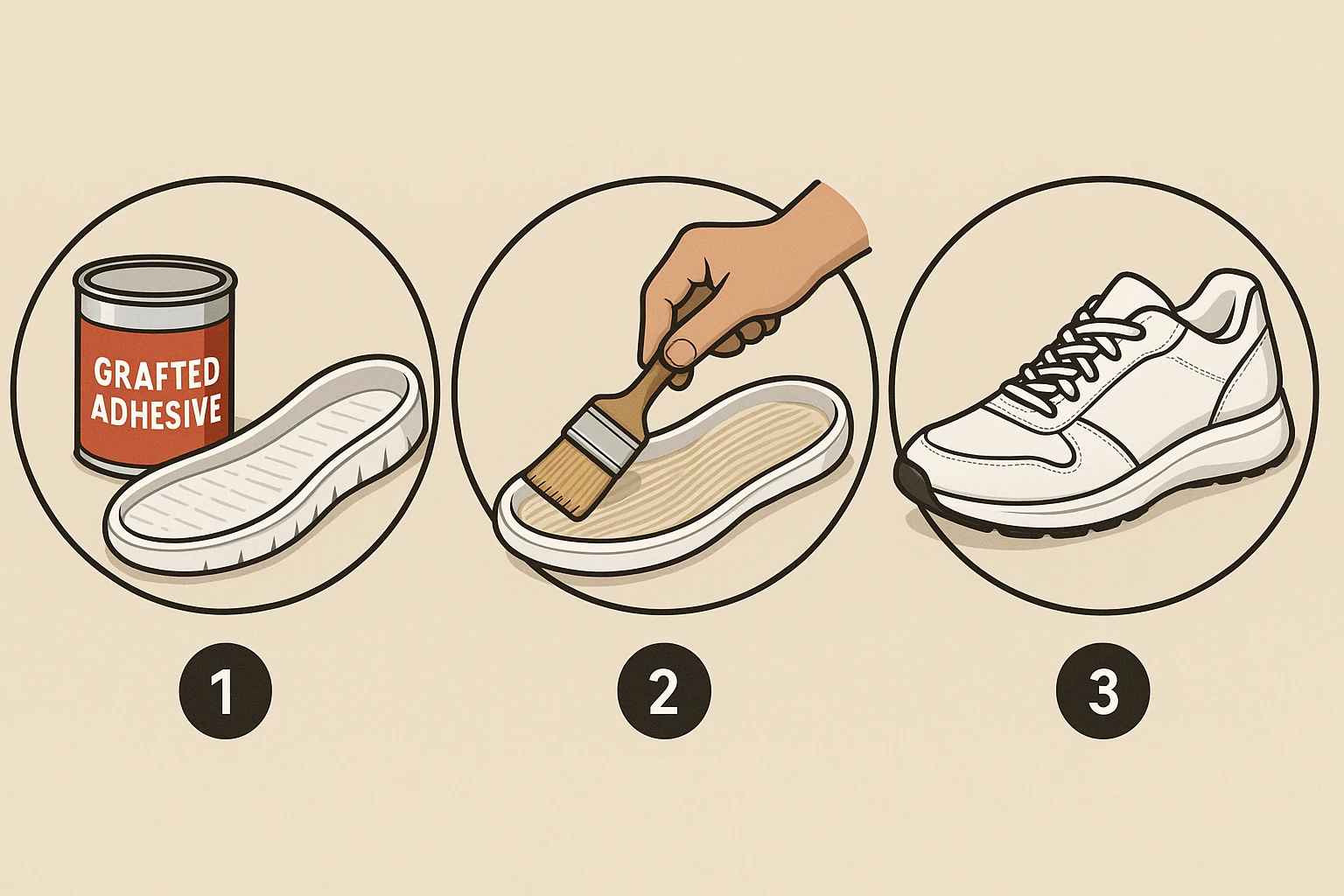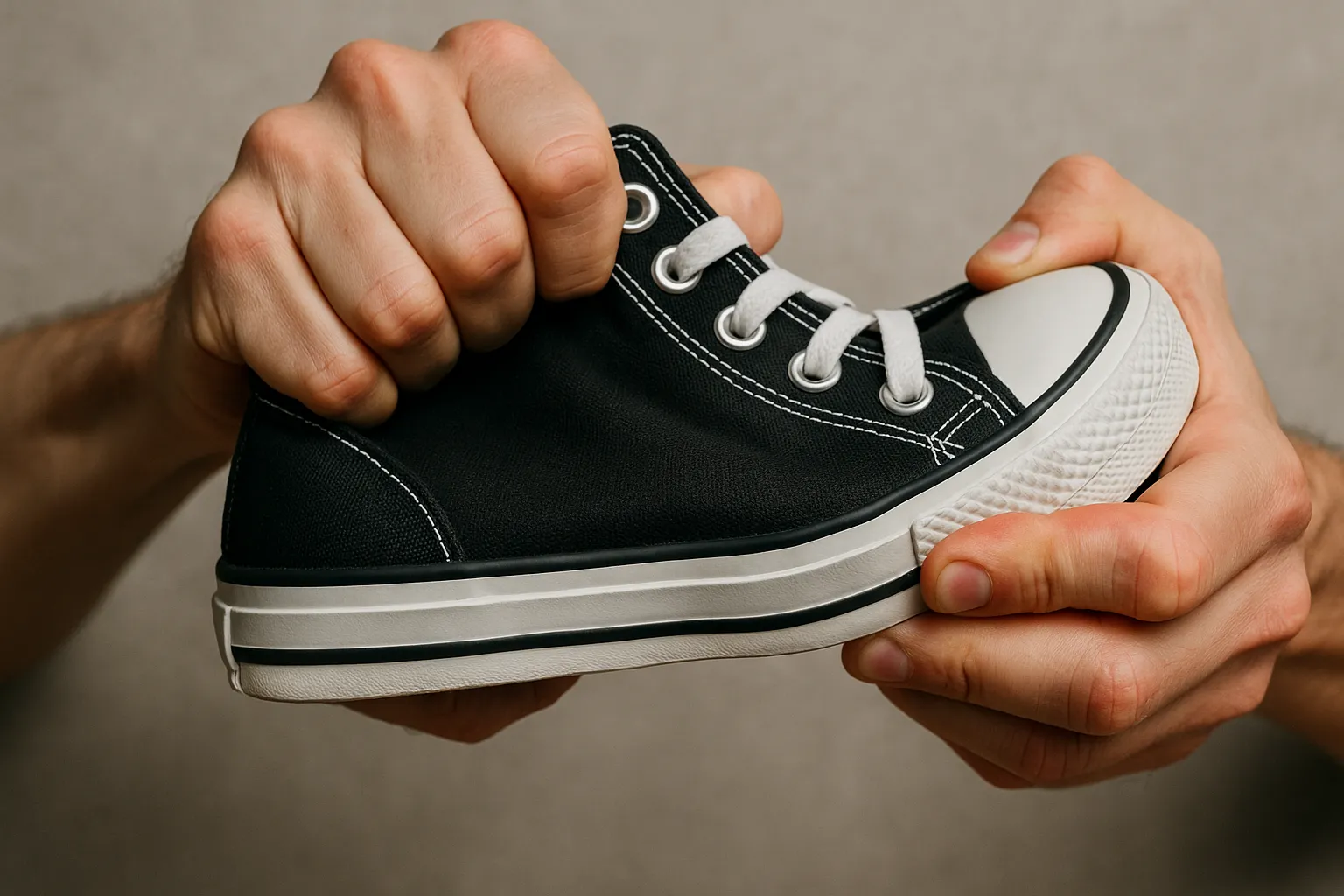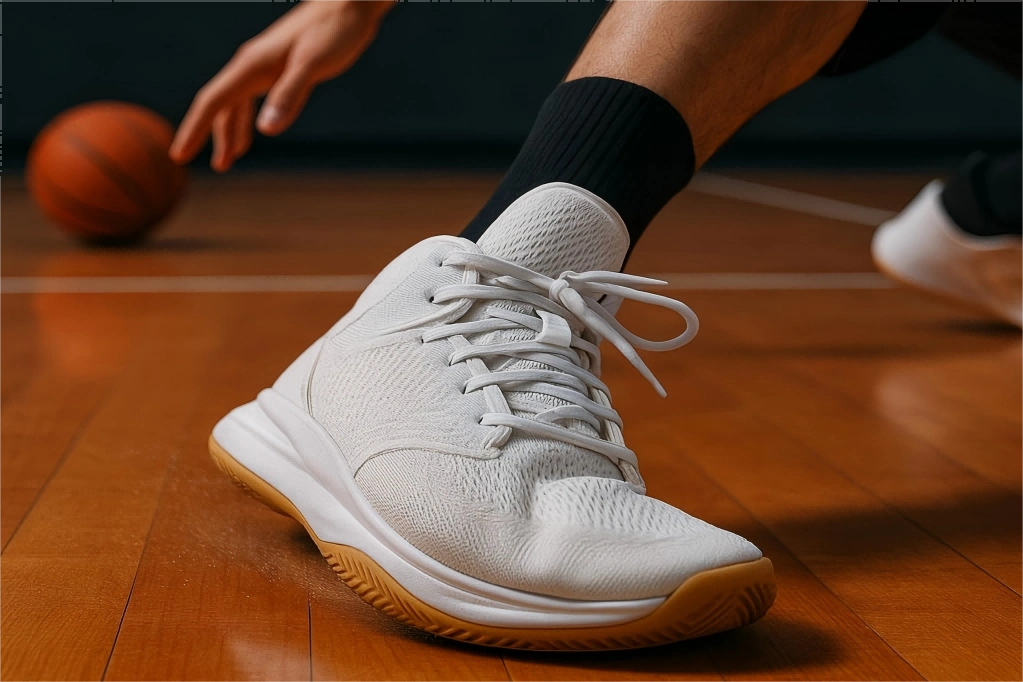If you work in the shoe business, grafted adhesives should be your first choice for improving how well your products perform and last. In the shoe industry, selecting the right adhesive is important for the durability, comfort, and overall quality of footwear. One type of adhesive that has gained considerable attention in recent years is the grafted adhesive.
But what exactly are grafted adhesives, and why are they becoming a go-to solution for footwear manufacturers? In this article, we will explore the science, benefits, and applications of grafted adhesives in the footwear industry.
What Are Grafted Adhesives?
Grafted adhesives are advanced bonding agents that involve a unique process known as graft polymerization. In this process, polymer chains are joined to a backbone material. This makes an adhesive that is stronger, more flexible, and more durable than regular adhesives. This change helps grafted adhesives stick well to many materials. This includes those often used in making shoes, like rubber, leather, fabric, and man-made materials.
Grafted adhesives are different from regular adhesives. They create stronger bonds that resist things like heat, moisture, and wear. This makes them great for shoes that are used every day.
How Do Grafted Adhesives Work in Footwear Manufacturing?
The main purpose of grafted adhesives in shoes is to bond with different materials often used in making footwear. These glues form a strong bond between surfaces. This keeps parts like soles, uppers, and insoles attached for a long time. Grafted adhesives excel in applications where the adhesive needs to perform well under stress, movement, and varying environmental conditions.
Grafted adhesives make strong bonds by working with the surface molecules of materials like leather, rubber, or EVA foam. This results in a firm bond that keeps shoes intact, even under tough conditions. This strong bond helps shoes last longer. It makes them more durable and able to handle daily use.

Types of Grafted Adhesives in Footwear
In the footwear industry, several types of grafted adhesives are commonly used, each with its specific properties and applications:
Pressure-Sensitive Adhesives (PSAs): These adhesives are perfect for applications where a non-permanent bond is required. PSAs are often used for attaching insoles, decorative elements, or labels on footwear.
Thermoplastic Adhesives: These glues work when heated. They are great for sticking thermoplastic materials like EVA or PU, which are often used in shoe soles. They offer excellent strength and flexibility, which is essential for maintaining the shoe’s comfort and durability.
Structural Adhesives(solvent-based): These adhesives are strong and can handle tough conditions. They are used to attach parts of shoes that need to be very durable, like connecting the outsole to the upper in heavy-duty shoes.
These glues help makers make shoes that are strong and look good. This way, the shoes work well and stay in good shape for a long time. There are many other effective grafting glues. You can go to this blog, which explains the effects of more grafting glues.
Advantages of Grafted Adhesives in Footwear
Grafted adhesives offer several distinct advantages that make them particularly useful in the footwear industry:
Strong Bonding: Grafted adhesives are made to stick well to materials like leather, rubber, and EVA. Regular adhesives may not work well on these surfaces. This results in footwear that remains intact longer, even with constant movement and stress.

Resistance to Environmental Factors: Shoes are exposed to a variety of environmental challenges, such as moisture, heat, and dirt. Grafted adhesives resist these elements better. This means the bond between shoe parts stays strong over time.

Flexibility: Footwear often requires adhesives that can maintain a strong bond while allowing for flexibility. Grafted adhesives excel in this area, as they can bond materials in a way that accommodates the natural flex and movement of shoes, enhancing comfort and performance.

Long-Term Durability: Unlike traditional adhesives, grafted adhesives are designed for longevity. Their stronger resistance to UV damage and wear helps shoes made with these glues stay in great shape for a long time.
If you’re not yet aware of the importance of these performance characteristics for shoes, you can learn more in this post. After reading it, you’ll become more familiar with grafted adhesives.
Common Myths About Grafted Adhesives in Footwear
Despite the advantages of grafted adhesives, some misconceptions still exist in the footwear industry. One common myth is that these adhesives are too expensive for mass production. They may cost more at first than regular adhesives, but they last longer and work better. In the end, they are a cheaper option. Another misconception is that grafted adhesives are only for high-end or niche footwear products. In reality, they are versatile and can be used in a wide range of footwear, from everyday sneakers to luxury shoes.
The Future of Grafted Adhesives in Footwear
The future of grafted adhesives in the footwear industry looks promising, with continuous innovations in adhesive technology. Manufacturers are increasingly turning to eco-friendly grafted adhesives that offer the same high performance while reducing environmental impact. Additionally, advancements in graft polymerization techniques are making these adhesives even more efficient, with faster curing times and stronger bonding capabilities.
As more people want eco-friendly and strong shoes, grafted adhesives will be more important in the shoe industry. They provide good performance and help the environment.
How to Choose the Right Grafted Adhesive for Footwear
When selecting a grafted adhesive for footwear manufacturing, several factors should be considered.
First, consider the types of materials that need to be bonded, as different adhesives work better with specific surfaces. Additionally, consider the environmental conditions the shoes will be exposed to, such as moisture, heat, or sunlight. Finally, think about the manufacturing process. If heat activation is required, thermoplastic adhesives are an excellent choice. For high-stress applications, structural adhesives may be the best option.
Conclusion: Grafted Adhesives Are a Game-Changer for Footwear
Grafted adhesives are changing how shoes are made. They provide a stronger, more lasting, and flexible option than regular adhesives. They can attach to tough materials, withstand environmental conditions, and improve the lifespan of shoes. This makes them very useful in the shoe industry. As technology advances, grafted adhesives will continue to improve, providing footwear manufacturers with the tools they need to create high-performance, long-lasting products that meet the demands of today’s consumers.
Footwear manufacturers can improve their products by knowing the benefits of grafted adhesives. This knowledge helps them create higher quality shoes, keep customers happy, and support sustainability. If you’re in the footwear industry, grafted adhesives should be at the top of your list for enhancing the performance and durability of your products.
